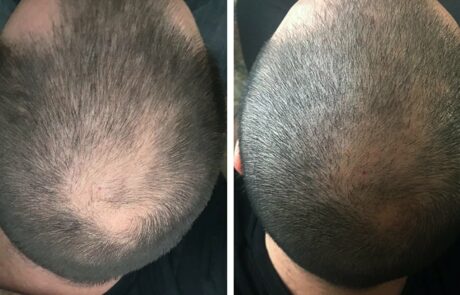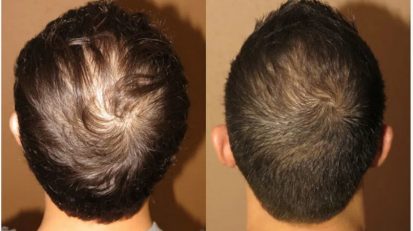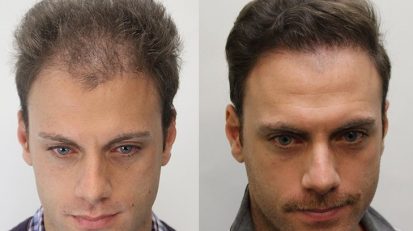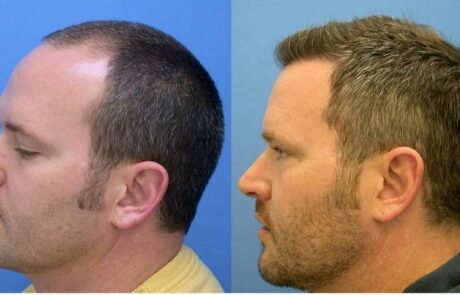Male Hair Loss
Male Hair Loss Treatment for the Sydney, Parramatta & Newcastle Area
Female and male hair loss are similar in their effects, but the causes and probable effects are usually quite different. In many cases, this is because hormonal balances differ greatly between genders, and are a key factor in determining exactly what happens to the hair. The main hormone responsible for growth and loss is called dihydrotestosterone (di-hydro-testosterone, or DHT), which is basically extra-strength testosterone that is naturally made by the body. If your body produces too much, or you are naturally susceptible to it, then hair loss might result.
The three main baldness and thinning patterns in both genders are all caused by DHT. These patterns are clinical alopecia, male pattern baldness and female pattern baldness. If you are suffering from hair loss, it is most likely one of these three conditions, and was most likely inevitable, as all of these are strongly rooted in genetic and hereditary conditions. The severity and intractability of your condition might necessitate the use of non-surgical hair replacement systems, or might be treatable with the simple and non-invasive application of topical creams and laser regrowth techniques.
Alopecia related male hair loss
Alopecia is just the medical term for going bald, but it has come to refer to a specific disease that not only causes hair loss but also actively prevents the regrowth of new follicles. This is caused by excessive DHT. The body will start regarding new follicles as foreign contaminants and destroy them before they can grow. It differs from the standard forms of baldness in the suddenness and completeness of hair loss, and the autoimmune (under attack by your own immune system) nature of the condition. Alopecia can often be treated easily, but is more likely than other forms of baldness to necessitate the use of hair replacement systems.
There are three main types of alopecia:

Male pattern baldness
Technically, this is also a type of alopecia. Any gender can experience both male and female pattern baldness, but as you might expect, males are more likely to suffer from male pattern baldness and females from female pattern baldness. Again, DHT is usually the cause of both. Male pattern baldness is probably what comes to mind when a man talks about losing his hair as it accounts for more than 19 out of 20 cases.
Male hair loss treatments
The integral role of hormones in hair loss and the differences in how male and female bodies absorb and produce these hormones means that the best results often depend on providing different treatments based on gender. Getting the most out of topical creams means getting ones that match your needs, and enjoying the best results from any replacement options, means having it done by a hair loss specialist that has managed to get a good understanding of the exact medical nature of your condition. Here at New Generation Hair, we are very thorough. That is because it is the only way to ensure the best possible results every time.
Get started on your journey to great hair. For male hair loss treatments, further information or to book a free hair analysis appointment, just call or contact us online.







